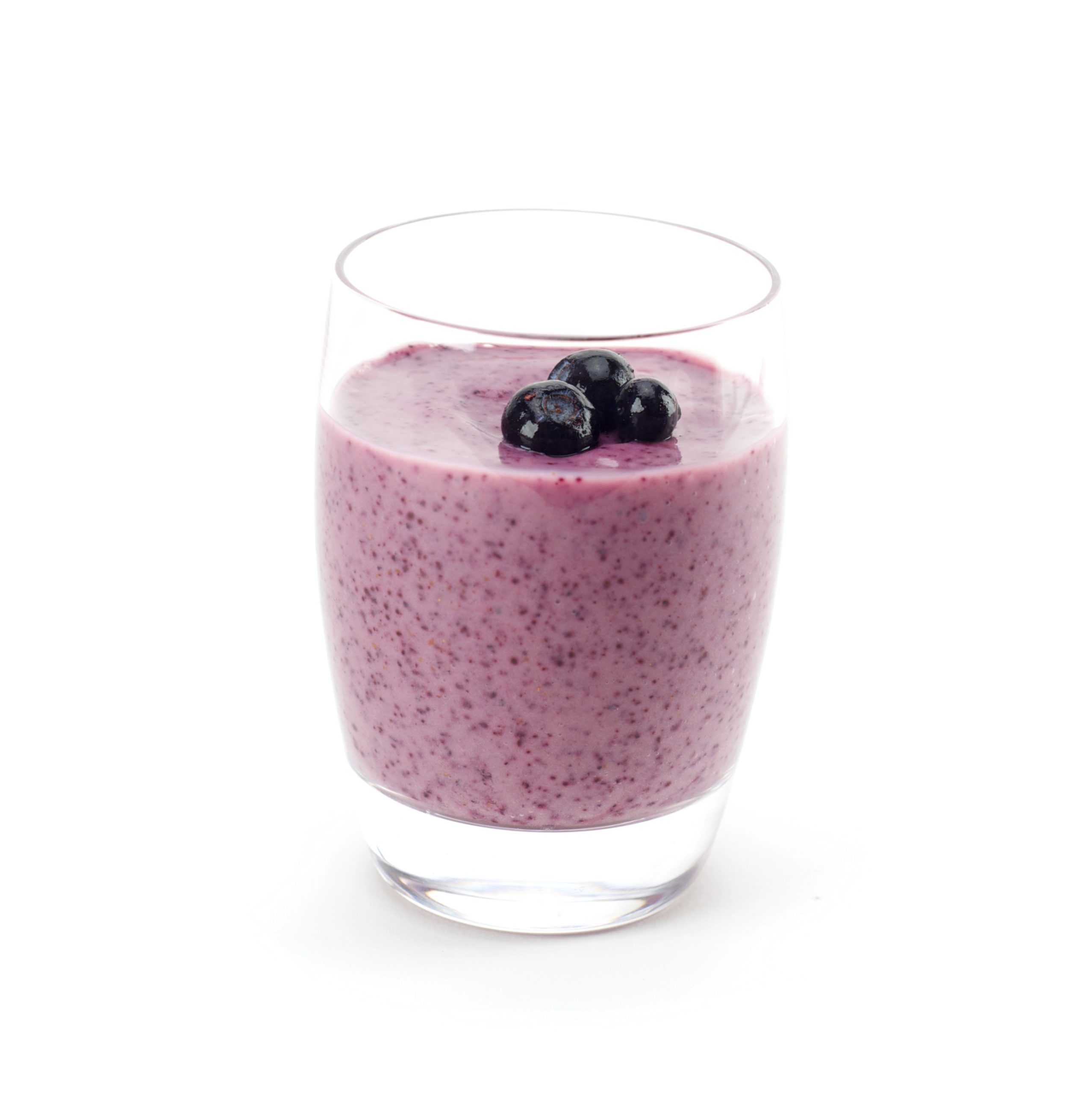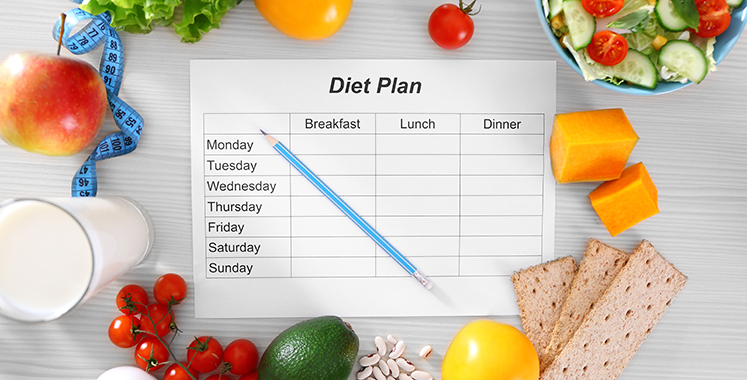It’s New Year’s resolution time. Let’s explore the top five diets and how we can aim for healthy eating in 2017 and beyond.
What are the top five healthy diets in North America?
January is here, the prime month for setting weight loss and healthy eating goals. Planning to make better food choices? How can you change your way of eating?
Let’s take a closer look at the top five healthy diets found in North America.

In no particular order, the five healthy eating patterns are: DASH diet, Mediterranean diet, Canada’s Food Guide, Healthy US-Style Pattern, and the vegetarian diet. When you look at Table 1, it’s easy to see that the variation between the healthy dietary patterns is small and the main principles are consistent.
Table 1*
|
Dietary pattern
|
Vegetable & FruitA
|
Grain ProductsB
|
Milk & AlternativesC
|
Meat & AlternativesD
|
OilsE
|
|
DASH
|
8-10
|
7-8 (mostly whole grains)
|
2-3
|
2
|
1
|
|
Mediterranean
|
8-11
|
5-7 (at least half whole grains)
|
2
|
2.5
|
2-3
|
|
Vegetarian
|
7-10
|
5.5-7.5 (at least half whole grains)
|
3
|
2-3 (includes meat alternatives only)
|
2-3
|
|
Healthy US-Style
|
7-10
|
5-7 (at least half whole grains)
|
3
|
2-3
|
2-3
|
|
Canada’s Food Guide
|
7-10
|
6-8 (at least half whole grains)
|
2
|
2-3
|
2-3
|
*Note all amounts are based on portions suggested for a healthy, moderately active adult female or male age 19-50
a = based on a ½ cup serving size
b= based on ½ cup serving of cooked rice/pasta, 1 slice of bread, 30g cold cereal, or ¾ cup hot cereal
c= based on 1 cup serving of milk or fortified soy beverage, 1.5 oz of cheese, or ¾ to 1 cup of yogurt
d= based on 2.5 oz serving of meat, fish or poultry, 2 eggs, 2 Tbsp peanut butter, ¼ cup nuts/seeds, or ¾ cup serving of cooked beans/lentils or tofu.
e= based on 1Tbsp vegetable oil, 1 Tbsp peanut butter, ½ medium avocado, 1 oz nuts or seeds, or 1 Tbsp salad dressing/mayonnaise/margarine
All five diets emphasize vegetables and fruit, whole grains, and include smaller amounts of dairy, legumes, nuts, seeds, soy products, and eggs. All except the vegetarian pattern include small amounts of meat, fish and poultry as well.
What’s the research behind these top five diets?
a) DASH Diet
The DASH diet was designed to help people lower blood pressure. Research has shown that people who follow the traditional DASH pattern of eating tend to experience reduced blood pressure and an overall decrease in cardiovascular disease risk.1,2,3,4

b) Mediterranean Diet:
The classic Mediterranean diet is the pattern of eating consumed by people living in the regions of Europe surrounding the Mediterranean Sea such as Spain and Greece. Researchers have found people following a Mediterranean pattern of eating have lower risk for heart disease, diabetes, and are at a healthier body weight.5,6,7
c) Canada’s Food Guide:
Canada’s Food Guide was developed using foods commonly available and consumed in Canada. Foods are divided into groups and included in amounts designed to meet the general population’s nutrition requirements and decrease the risk for chronic disease.8
d) Healthy US-Style Pattern:
The Healthy US-Style pattern of eating within the US dietary guidelines are also based on the science behind what promotes health and decreases the risk for developing diet-related chronic diseases. 9 Foods and groupings are presented in a similar way as Canada’s Food Guide, based on the types and amounts of foods commonly available in the US.
e) Vegetarian Diet:
The most typical vegetarian diet fits within Canada’s Food Guide and the US dietary guidelines as those diets do not need to include meat, fish or poultry.10 Research has shown that people following a vegetarian diet have a reduced risk for developing diabetes and heart disease, and are often at a lower body weight.11

The bottom line:
The experts more or less agree on the foods to focus on: plant-based foods such as vegetables, fruit, and whole grains, while also including smaller amounts of dairy (or fortified soy beverage) and small portions of meat and alternatives (meat, poultry, fish, eggs, soy products, nuts/seeds, and dried beans/lentils).
Do Canadians follow Canada’s Food Guide?
Many people are concerned about Canadians’ increasing weight and poor health due to the trend of moving less and eating more. Is that because everyone is following Canada’s Food Guide? Unfortunately no, we can’t blame our guidelines.
When we look at the Canadian data about which nutrients people’s diets are low in, we see the nutrients of concern (magnesium, calcium, vitamin A, vitamin D, potassium, fibre) are found in the “Vegetable and Fruit” and “Milk and Alternatives” food groups. Additionally, they can also be found in the whole grains from the “Grain Products” food group and the “Alternatives” of the “Meat and Alternatives” food group— beans, lentils, soy products, nuts and seeds.
How does my lunch and snack rate?

What did this dietitian eat today for lunch and how does it fit into the guidelines? I had leftovers from last night’s dinner:
- Ethiopian lentil bowl (with fresh tomatoes instead of tomato paste because we had them)
- orzo with homemade walnut kale pesto
- swiss chard with onion and garlic
A couple of hours later I was hungry again so I had a sliced apple with cheese as a snack.
If I break down what I ate for lunch and snack, it probably included the following:
|
Vegetable & Fruit
|
Grain Products
|
Milk & Alternatives
|
Meat & Alternatives
|
Oils
|
|
3
|
2
|
1
|
1
|
1
|
If we say that’s about 1/3 of my intake for the day, I’m on my way to fitting the foods I ate into all top five diet patterns.
How does your lunch compare to the guidelines?
Think about what you ate for lunch (and afternoon snack if you had one) yesterday.
Did it include all of the following?
If not, what could you add?
If so, did the proportions of the food and ingredients look something like this?
So what now?
Most of us can make changes to create a healthier pattern of eating but why is it so difficult?
Because in the long term, people don’t usually choose the foods they eat based on their nutrition! The top reasons people eat what they do is because:
– it tastes good
– it’s affordable and available
– they can easily prepare it
It’s not about putting together a plate full of the superfoods of the day, it’s about what we like and what’s in our pantry, fridge, or grocery store.
Should you eat goji berries in your cereal and smoothies in the morning because they are really high in antioxidants? Ask yourself these two questions:

- Are they locally available and affordable?
- Do you enjoy the taste of them?
For me the answer to both those questions is no. I often include local frozen blueberries in my smoothies and my oatmeal. Do blueberries also have the health benefits touted by goji berry marketers (fibre, vitamin C, disease-fighting phytochemicals, low glycemic index)? You bet. Do I really enjoy them? Absolutely.
So how can you eat better?
Top 7 tips to support healthy eating:
- Find an enjoyable structure and routine to your eating
- Include foods you enjoy, not just foods that you think you should eat
- Eat with others, at a table, without a screen, at least once a day
- Give yourself permission to eat until you feel satisfied
- Notice the aroma, texture and flavours in your food
- If it doesn’t taste good, don’t eat it
- Cook. Anything. Just cook.
The most important consideration with all the items above is…
…we need to start small! We are creatures of habit so it takes a long time to carve out a sustainable change in our routine. The smaller the better.

To get inspired with ideas that could work for you, check out these tips for eating well. If you’re still feeling confused or don’t know where to start, why not see a dietitian? That way you can receive tailored advice for you. If you have extended health benefits, the cost may even be covered. Another option is to call 8-1-1 and ask to speak to a dietitian on the phone at no cost through HealthLink BC.
If we make small changes, focusing on the foods we want to eat more of, we’ll have a better chance at creating sustainable healthy changes that will last through 2017 and beyond.
References
- http://www.nejm.org/doi/full/10.1056/NEJM199704173361601#t=article. Accessed 9 Jan. 2017.
- Swain JF et al. Characteristics of the diet patterns tested in the optimal macronutrient intake trial to prevent heart disease (OmniHeart): options for a heart-healthy diet. J Am Diet Assoc 2008;108:257-265. Accessed 9 Jan. 2017.
- Roussell MA et al. Beef in an Optimal Lean Diet study: effects on lipids, lipoproteins, and apolipoproteins. Am J Clin Nutr 2012;95:9-16. Accessed 9 Jan. 2017.
- Chiu S et al. Comparison of the DASH (Dietary Approaches to Stop Hypertension) diet and a higher-fat DASH diet on blood pressure and lipids and lipoproteins: a randomized controlled trial. Am J Clin Nutr 2016;103:341-347. Accessed 9 Jan. 2017.
- http://onlinelibrary.wiley.com/doi/10.1002/14651858.CD009825.pub2/epdf/standard. Accessed 9 Jan. 2017.
- http://www.nature.com/ejcn/journal/v69/n11/full/ejcn2014243a.html. Accessed 9 Jan. 2017.
- http://www.cmaj.ca/content/early/2014/10/14/cmaj.140764. Accessed 9 Jan. 2017.
- http://www.hc-sc.gc.ca/fn-an/food-guide-aliment/context/evid-fond-eng.php. Accessed 9 Jan. 2017.
- https://health.gov/dietaryguidelines/2015/guidelines/chapter-1/the-science-behind-healthy-eating-patterns/. Accessed 9 Jan. 2017.
- https://health.gov/dietaryguidelines/2015/guidelines/appendix-5/. Accessed 9 Jan. 2017.
- https://www.ncbi.nlm.nih.gov/pubmed/26853923. Accessed 9 Jan. 2017.
